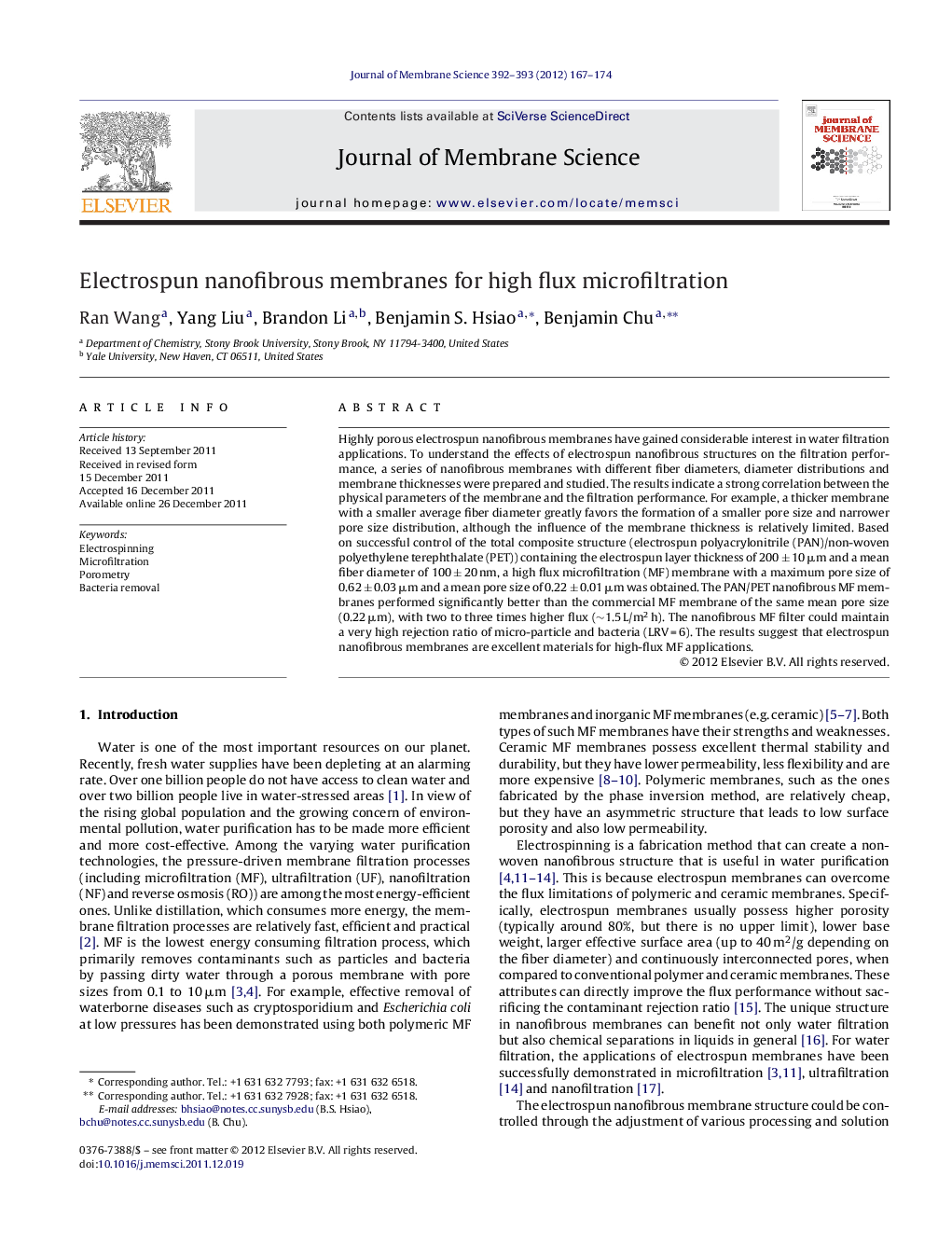| Article ID | Journal | Published Year | Pages | File Type |
|---|---|---|---|---|
| 635207 | Journal of Membrane Science | 2012 | 8 Pages |
Highly porous electrospun nanofibrous membranes have gained considerable interest in water filtration applications. To understand the effects of electrospun nanofibrous structures on the filtration performance, a series of nanofibrous membranes with different fiber diameters, diameter distributions and membrane thicknesses were prepared and studied. The results indicate a strong correlation between the physical parameters of the membrane and the filtration performance. For example, a thicker membrane with a smaller average fiber diameter greatly favors the formation of a smaller pore size and narrower pore size distribution, although the influence of the membrane thickness is relatively limited. Based on successful control of the total composite structure (electrospun polyacrylonitrile (PAN)/non-woven polyethylene terephthalate (PET)) containing the electrospun layer thickness of 200 ± 10 μm and a mean fiber diameter of 100 ± 20 nm, a high flux microfiltration (MF) membrane with a maximum pore size of 0.62 ± 0.03 μm and a mean pore size of 0.22 ± 0.01 μm was obtained. The PAN/PET nanofibrous MF membranes performed significantly better than the commercial MF membrane of the same mean pore size (0.22 μm), with two to three times higher flux (∼1.5 L/m2 h). The nanofibrous MF filter could maintain a very high rejection ratio of micro-particle and bacteria (LRV = 6). The results suggest that electrospun nanofibrous membranes are excellent materials for high-flux MF applications.
► We studied the morphology of electrospun nanofibrous scaffolds. ► The morphology can affect the membrane porometry and filtration efficiency. ► Microfiltration membranes are fabricated by controlling parameters of the scaffolds. ► The membranes can remove micro-particles and bacteria with very high flux.
